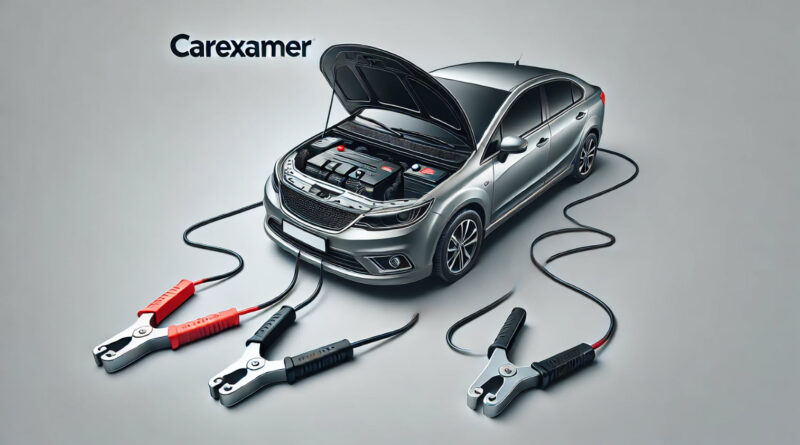Guide What to Do If You Have a Flat Car Battery
Dealing with a flat car battery this guide covers simple steps to get back on the road and tips to prevent future battery issues. We’ve all been there – you turn the key, and nothing happens. Having a flat car battery is a hassle, but it’s more common than you think, and with the right steps, you can get back on the road quickly. Whether your battery died from leaving the lights on, cold weather, or age, this guide will walk you through what to do next and how to prevent it from happening again.
Step 1: Check the Signs of a Flat Battery
Before doing anything, make sure it’s actually the battery causing the problem. Here’s how to tell if your battery is flat:
- Car won’t start: You might hear a clicking noise, or nothing at all, when turning the key.
- Dim lights: The dashboard or headlights may appear dim or flicker.
- No power: Electrical systems like the radio or windows might not work.
If you notice these signs, it’s likely your battery is flat.
Step 2: Jump-Start Your Car
Jump-starting is the quickest fix for a flat battery. You’ll need a set of jumper cables and another car with a working battery.
Here’s how to jump-start your car:
- Park both cars: Position the working car close to yours, so the jumper cables can reach, but don’t let the cars touch.
- Turn everything off: Make sure both cars are turned off, and pop open the hoods.
- Connect the jumper cables:
- Attach the red clip to the positive (+) terminal on your dead battery.
- Attach the other end of the red clip to the positive (+) terminal on the working car.
- Attach the black clip to the negative (-) terminal on the working car.
- Attach the other end of the black clip to an unpainted metal surface on your car (like a bolt on the engine block), away from the battery.
- Start the working car: Let it run for a few minutes.
- Start your car: Try starting your car. If it works, let both cars run for a few minutes.
- Remove the cables: Disconnect the jumper cables in the reverse order you connected them.
- Leave your car running: Leave engine running at least 15-20 minutes to recharge the battery.
If your car still won’t start after a few tries, the battery may be beyond saving and you’ll likely need a new one.
Step 3: Use a Portable Battery Charger
If you’ve got a portable battery charger (a handy gadget for emergencies), you can use that to charge your car battery without needing another vehicle.
To use it:
- Connect the charger to the battery terminals (red to positive, black to negative).
- Turn on the charger and let it do its thing.
- Once the battery is charged, try starting your car.
Step 4: Call for Help
If jumping or charging your battery doesn’t work, or if you don’t have the necessary tools, your best bet is to call for roadside assistance. Many breakdown services or insurance policies include battery help, so they can jump-start your car or even replace the battery for you.
Step 5: Replace the Battery
If your car battery is more than 3-5 years old, it may not hold a charge anymore. If you’ve had to jump-start it more than once recently, it’s probably time to replace it.
You can replace the battery yourself if you’re comfortable with it:
- Disconnect the negative (-) and positive (+) cables from the old battery.
- Remove the old battery and place the new one in.
- Reconnect the cables, starting with the positive (+) terminal.
Most garages will replace the battery for you if you prefer to leave it to the pros.
How to Avoid a Flat Battery in the Future
Here are a few easy ways to keep your battery healthy and avoid getting stuck with a flat battery again:
- Drive regularly: If your car sits for long periods without being driven, the battery can slowly lose its charge. Aim to drive at least once a week for 15-20 minutes.
- Turn off lights and electronics: Make it a habit to check that everything is turned off when you leave the car—especially the headlights and interior lights.
- Keep the battery clean: Dirt and corrosion on the battery terminals can cause problems. Clean the terminals regularly with a mix of baking soda and water.
- Use a battery maintainer: If you don’t drive your car often, consider investing in a battery conditioner or trickle charger to keep the battery charged.
Final Thoughts
Dealing with a flat car battery is never fun, but it doesn’t have to be a disaster. Whether you jump-start your car, use a portable charger, or call for help, there’s always a solution to get you moving again. By keeping an eye on your battery’s health and taking some simple precautions, you can prevent future battery issues and avoid the frustration of being stuck with a dead battery.
Buying a used VW. Buying used vauxhall, BMW, Jaguar, Ford, Volvo, Range rover, Bentley, Aston Martin, Porsche, Ferrari, Lamborghini, Maserati, Hyundai, Tesla, Honda, Pagani

